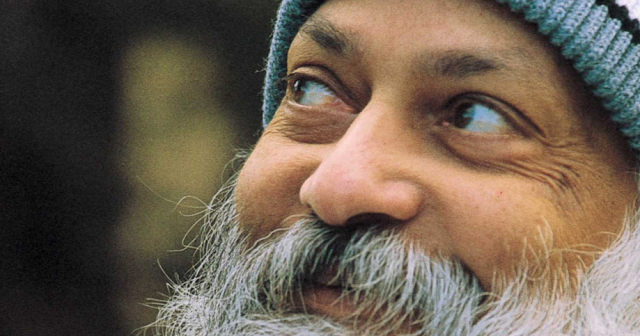Problems. We all have them.
Some are small, others are big.
But whatever life is throwing our way, the one thing remains true:
We think about them. We think about solutions and worries, whether it’s productive or not.
However, sometimes this thinking can become so constant that it’s impossible to stop.
But if we want to take action in our lives and live in the moment, we need to learn to stop it.
The problem that we’ve all experienced, however, is that the harder we try to stop thinking, the more intense our thinking becomes.
So, what can we do?
According to Buddhism, it’s all about learning the art of acceptance and letting go.
Below we have some excellent advice from Buddhist Master Osho on how to cultivate a calm mind.
How to stop thinking
“THINKING cannot be stopped. Not that it does not stop, but it cannot be stopped. It stops of its own accord. This distinction has to be understood, otherwise you can go mad chasing your mind. No-mind does not arise by stopping thinking. When the thinking is no more, no-mind is. The very effort to stop will create more anxiety, it will create conflict, it will make you split. You will be in a constant turmoil within. This is not going to help.”
“And even if you succeed in stopping it forcibly for a few moments, it is not an achievement at all — because those few moments will be almost dead, they will not be alive. You may feel a sort of stillness, but not silence, because a forced stillness is not silence. Underneath it, deep in the unconscious, the repressed mind goes on working. So, there is no way to stop the mind. But the mind stops — that is certain. It stops of its own accord.”
Instead, Osho says that it’s far more fruitful to learn the art of acceptance and simply watch the mind work:
“Watch — don’t try to stop. There is no need to do any action against the mind. In the first place, who will do it? It will be mind fighting mind itself. You will divide your mind into two; one that is trying to boss over — the top-dog — trying to kill the other part of itself, which is absurd. It is a foolish game. It can drive you crazy. Don’t try to stop the mind or the thinking — just watch it, allow it. Allow it total freedom. Let it run as fast as it wants. You don’t try in any way to control it. You just be a witness. It is beautiful!”
“The deeper your watchfulness becomes, the deeper your awareness becomes, and gaps start arising, intervals. One thought goes and another has not come, and there is a gap. One cloud has passed, another is coming and there is a gap. In those gaps, for the first time you will have glimpses of no-mind, you will have the taste of no-mind. Call it taste of Zen, or Tao, or Yoga. In those small intervals, suddenly the sky is clear and the sun is shining. Suddenly the world is full of mystery because all barriers are dropped. The screen on your eyes is no more there.”
Through non-attached witnessing, Osho says that eventually this will give you more control over the mind.
“Non-attached witnessing is the way to stop it without any effort to stop it. And when you start enjoying those blissful moments, your capacity to retain them for longer periods arises. Finally, eventually, one day, you become master. Then when you want to think, you think; if thought is needed, you use it; if thought is not needed, you allow it to rest. Not that mind is simply no more there: mind is there, but you can use it or not use it. Now it is your decision. Just like legs: if you want to run you use them; if you don’t want to run you simply rest — legs are there.”
So, what techniques can we use to quieten the mind? Firstly, Osho warns against drugs:
“The modern mind is in much hurry. It wants instant methods for stopping the mind. Hence, drugs have appeal. Mm? — you can force the mind to stop by using chemicals, drugs, but again you are being violent with the mechanism. It is not good. It is destructive. In this way you are not going to become a master. You may be able to stop the mind through the drugs, but then drugs will become your master — you are not going to become the master. You have simply changed your bosses, and you have changed for the worse.”
Instead, Osho says that using a technique like meditation is the correct way to control the mind, because you’re simply sitting their and watching the mind, without fighting against it.
“Meditation is not an effort against the mind. It is a way of understanding the mind. It is a very loving way of witnessing the mind — but, of course, one has to be very patient. This mind that you are carrying in your head has arisen over centuries, millennia. Your small mind carries the whole experience of humanity — and not only of humanity: of animals, of birds, of plants, of rocks. You have passed through all those experiences.
All that has happened up to now has happened in you also. In a very small nutshell, you carry the whole experience of existence. That’s what your mind is. In fact, to say it is yours is not right: it is collective; it belongs to us all.”
Source Hack Spirit.







No comments:
Post a Comment